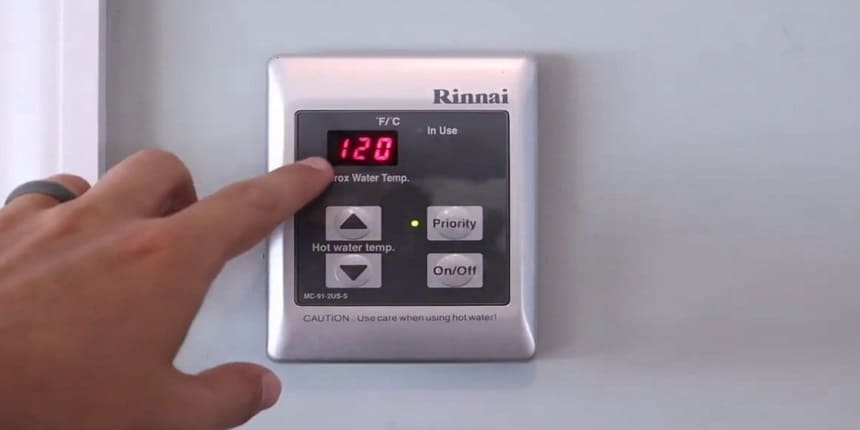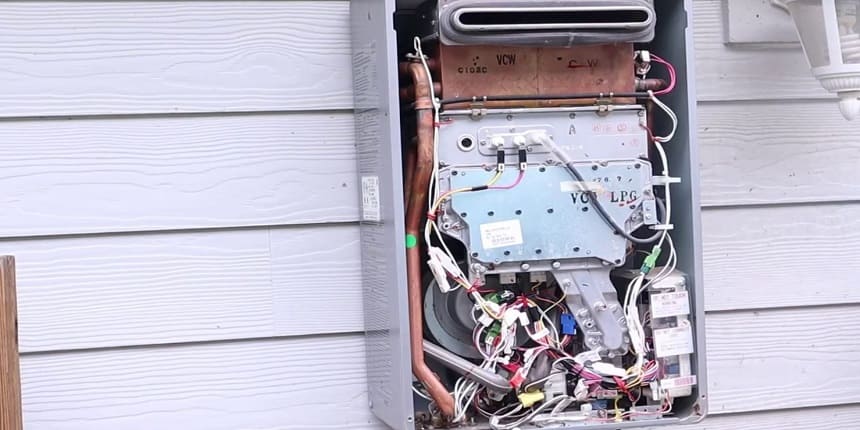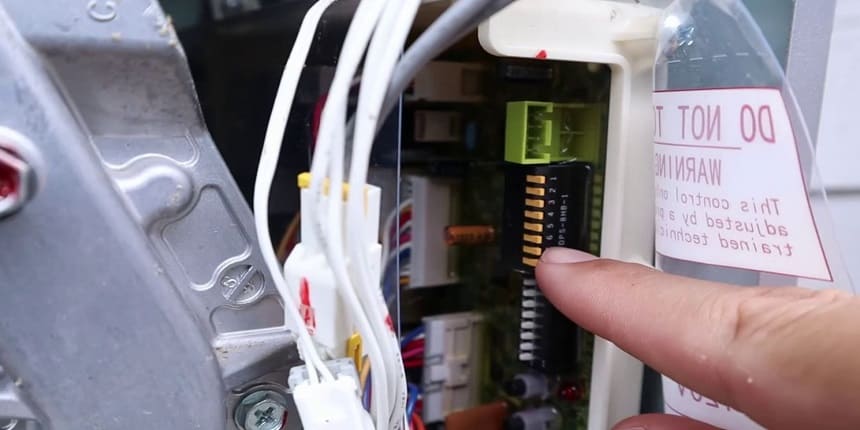If your Rinnai tankless water heater is not getting hot enough, it could be due to mineral buildup in the heat exchanger or a low gas supply. We will explore the common reasons why a Rinnai tankless water heater may not be producing enough hot water and provide troubleshooting tips to help you resolve the issue.
Tankless water heaters are a popular choice for homeowners seeking energy-efficient and on-demand hot water. However, issues such as insufficient hot water can be frustrating. It is important to identify the root cause of the problem and take appropriate steps to address it.
By understanding the potential reasons for the Rinnai tankless water heater not getting hot enough, you can effectively troubleshoot the issue and restore your hot water supply.
Page Contents
- 1 Why Is My Rinnai Tankless Water Heater Not Getting Hot Enough
- 2 Rinnai Tankless Water Heaters temperature controller
- 3 Rinnai tankless water heaters troubleshooting
- 4 Assistance And Maintenance For tankless hot water heater not getting hot
- 5 Why Is My Rinnai Tankless Water Heater Not Producing Hot Water?
- 6 How Can I Improve The Hot Water Output Of My Rinnai Tankless Water Heater?
- 7 What Are The Common Reasons For Inconsistent Hot Water From A Rinnai Tankless Water Heater?
- 8 Is A Rinnai Tankless Water Heater Suitable For Large Households?
- 9 The End
Why Is My Rinnai Tankless Water Heater Not Getting Hot Enough
If your Rinnai tankless water heater is not providing sufficiently hot water, it can be frustrating and inconvenient. Here, we’ll discuss the signs of inadequate heating to help you diagnose the issue with your Rinnai tankless water heater.

Signs Of Inadequate Heating Of rinnai tankless water heater not heating
When your Rinnai tankless water heater is not heating water to the desired temperature, it’s important to pay attention to the following signs:
#1: Inconsistent water temperature
If you notice fluctuations in water temperature during usage, it could indicate inadequate heating.
#2: Prolonged time to reach desired temperature
The water heater takes longer than usual to reach the desired hot water temperature, resulting in delays in getting hot water.
#3: Reduced water flow
A decrease in the flow of hot water from your faucets or showerheads may indicate that the heater is not heating water effectively.
Rinnai Tankless Water Heaters temperature controller
Advantages Of Tankless Systems
Rinnai tankless water heaters offer numerous benefits over traditional water heaters. Some of the key advantages include:
Energy Efficiency: Rinnai tankless water heaters are highly efficient, only heating water when it is needed, resulting in lower energy consumption and cost savings.
Endless Hot Water: With a tankless system, you can enjoy a continuous supply of hot water, eliminating the need to wait for a storage tank to refill.
Space-Saving Design: Unlike bulky traditional water heaters, Rinnai tankless systems are compact and can be installed in tighter spaces, freeing up valuable square footage.
Longevity: Tankless water heaters are known for their durability, often outlasting traditional units with proper maintenance.
Reduced Risk of Water Damage: Without a tank that can leak or burst, the risk of water damage from a tankless system is significantly lower.
Common Issues With Rinnai Tankless Water Heater Problems

While Rinnai tankless water heaters are renowned for their performance, there are instances where users may encounter problems, such as:
Water Not Getting Hot Enough: This can be caused by issues such as insufficient gas supply, a clogged inlet filter, or improper temperature settings.
Fluctuating Water Temperature: Variations in water temperature may result from a dirty burner, mineral build-up, or irregular water flow.
Error Codes: Rinnai units are equipped with diagnostic features that display error codes in case of malfunctions or maintenance needs.
Lack of Hot Water: Inadequate hot water delivery can stem from factors like high hot water demand, undersized units, or improper venting.
Rinnai tankless water heaters troubleshooting

When your Rinnai tankless water heater is not getting hot enough, troubleshooting the issue can help you identify and resolve the problem.
Step #1- Checking The Thermostat
The first step in troubleshooting your Rinnai tankless water heater is to check the thermostat settings.
Ensure that the thermostat is set to the desired temperature and that it hasn’t been accidentally adjusted to a lower setting.
You can do this by locating the thermostat on the unit and verifying the temperature setting to make sure it aligns with your hot water needs.
Step #2- Inspecting For Blockages
Blockages in the water heater’s system can significantly impact its efficiency.
Inspect the heater’s internal components, such as the water inlet filter or heat exchanger, for any debris or scale buildup.
Blockages can restrict water flow, leading to insufficient heating.
Clean these components if necessary, following the manufacturer’s guidelines to ensure proper maintenance.
Step #3- Ensuring Proper Gas Supply
Proper gas supply is crucial for the optimal performance of your Rinnai tankless water heater.
Check for any issues with the gas supply, such as low pressure or gas line obstructions.
Verify that the gas supply valve is fully open and that there are no leaks in the gas line.
Additionally, ensure that the gas burner is functioning correctly and producing a steady, blue flame for efficient water heating.
Step #4- Adjusting The Water Flow
If your Rinnai tankless water heater is not getting hot enough, one of the potential reasons could be an issue with water flow.
Adjusting the water flow is a crucial step to ensure that the heater operates at its optimal capacity.
In this section, we will delve into understanding flow rate and how to adjust it to enhance the performance of your Rinnai tankless water heater.
rinnai flow rate adjustment – rinnai tankless water heater temperature settings
Flow rate refers to the volume of water that passes through the water heater within a specific period, typically measured in gallons per minute (GPM). The flow rate directly impacts the ability of the tankless water heater to deliver hot water effectively. If the flow rate is too high, it may result in the water not reaching the desired temperature.
The recommended flow rate varies depending on the model and capacity of the water heater. To determine the ideal flow rate for your Rinnai tankless water heater, refer to the manufacturer’s specifications or consult a professional plumber.

To ensure that your Rinnai tankless water heater is operating at the correct flow rate, follow these steps:
#1: Check the Incoming Water Temperature:
Ensure that the temperature of the incoming water supply aligns with the specifications of the water heater. The ideal temperature range for most Rinnai models is between 50°F and 140°F.
#2: Clean the Water Filter:
Over time, the water filter in the heater may accumulate debris and sediment, which can hinder water flow. Regularly clean the water filter to maintain optimal flow rate.
#3: Adjust the Flow Restrictor:
Some Rinnai tankless water heaters are equipped with a flow restrictor that can be adjusted to control the flow rate. Consult the user manual or a professional plumber to adjust the flow restrictor appropriately.
By taking these steps to adjust the water flow, you can potentially address issues related to the Rinnai tankless water heater not getting hot enough.
Assistance And Maintenance For tankless hot water heater not getting hot
When you encounter issues with your tankless water heater not getting hot enough, it’s important to know when to seek professional help and implement regular maintenance measures.
If you find that your Rinnai tankless water heater is not producing hot water as expected, it may be time to seek professional assistance.
Issues such as inadequate hot water, uneven temperature, or fluctuating water flow can indicate underlying problems with the unit. While some issues can be resolved through simple maintenance tasks, certain issues require the expertise of a professional.
why is my tankless water heater not getting hot enough – Maintenance Tips
Regular maintenance includes tasks such as flushing the unit, checking for mineral buildup, and inspecting for leaks.
By following a maintenance schedule, you can prevent issues that may lead to a decrease in hot water production.
It’s also important to refer to the manufacturer’s guidelines for specific maintenance instructions and schedules.
Implementing these maintenance tips helps optimize the performance of your tankless water heater and minimizes the likelihood of encountering temperature-related issues.
Why Is My Rinnai Tankless Water Heater Not Producing Hot Water?
One reason your Rinnai tankless water heater might not be getting hot enough is a low flow rate.
Check for any obstructions or buildup in the pipes or heat exchanger that could be reducing water flow. Ensure the unit is properly sized for your needs as well.
How Can I Improve The Hot Water Output Of My Rinnai Tankless Water Heater?
To improve the hot water output, consider checking the inlet water temperature and ensuring it meets the manufacturer’s specifications.
Adjusting the temperature settings on the unit or descaling the heat exchanger may also help in improving the hot water output.
What Are The Common Reasons For Inconsistent Hot Water From A Rinnai Tankless Water Heater?
Inconsistent hot water from a Rinnai tankless water heater could be due to a variety of reasons, such as improper installation, insufficient gas supply, or a compromised flow sensor.
Check for any error codes on the unit and consult with a professional if the issue persists.
Is A Rinnai Tankless Water Heater Suitable For Large Households?
Rinnai tankless water heaters are designed to meet the hot water demands of large households.
With the right unit size and proper installation, a Rinnai tankless water heater can effectively provide hot water to multiple points of use simultaneously.
The End
Rinnai tankless water heaters not reaching desired temperatures can be frustrating. With proper troubleshooting and maintenance, you can improve its performance. Your comfort and satisfaction are essential, and addressing potential issues promptly will ensure your hot water needs are met efficiently.
Keep your tankless water heater working optimally for a seamless experience.
